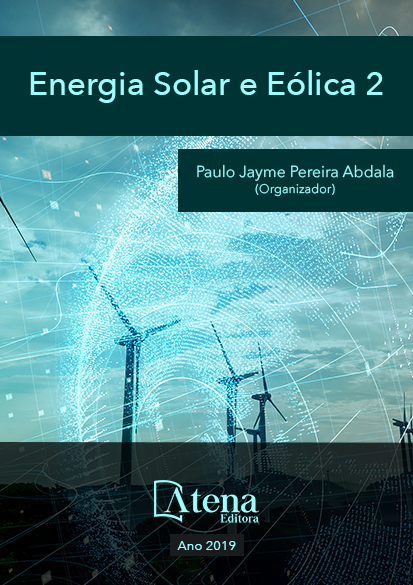
POTENCIALIDADE DO BIOGÁS GERADO PELA CODIGESTÃO ENTRE DEJETO BOVINO E SUÍNO
Diante da crise no setor hídrico e
energético, torna-se necessário investimento
em tecnologias economicamente viáveis que
visem em conjunto o tratamento de águas
residuais e a geração de energia. A adoção de biodigestores rurais contribui para a integração
das atividades agropecuárias, aproveitando
resíduo agrícola com pouco ou nenhum
valor comercial. Objetivou-se neste trabalho
estudar a codigestão anaeróbica dos resíduos
agrícolas característicos das propriedades
rurais localizada no Município de Seropédica
e Itaguaí - RJ. Utilizaram-se três protótipos de
biodigestores modelo indiano para a codigestão
de dejetos nas proporções 1:1, 1:4 e 4:1
bovino:suíno. Amostras do afluente e efluente
foram caracterizados por sólidos totais e
voláteis, condutividade elétrica e pH. Avaliou-se
a produção e potencial de biogás, o índice de
explosividade e os componentes monóxido de
carbono, sulfato de hidrogênio e oxigênio. Os
efluentes mantiveram-se dentro da faixa ideal
de pH para produção de biogás, apresentaram
aumento da condutividade elétrica e reduções
de sólidos totais e voláteis. Pode-se inferir que
maiores proporções de bovino tende apresentar
melhores características quantiqualitativa do
biogás
POTENCIALIDADE DO BIOGÁS GERADO PELA CODIGESTÃO ENTRE DEJETO BOVINO E SUÍNO
-
DOI: 10.22533/at.ed.67419220124
-
Palavras-chave: Biodigestor, Codigestão, Índice de explosividade.
-
Keywords: Biodigester, Codigestion, Explosivity index.
-
Abstract:
Considering the crisis in the
hydric and energetic field, there is a need for an
investment in economically viable technologies
whith focus on both raw water treatment and
energy generation. The adoption of rural biodigesters contributes for the integration of farming activities, making useful agricultural
waste with little or none commercial value. This paper aimed to study the anaerobic
codigestion of agricultural waste present on rural properties located in the Country of
Seropédica and Itaguaí - RJ. Three prototypes of Indian biodigestors were used for
the agricultural waste codigestion in the proportions of 1:1, 1:4 and 4:1 bovine:swine.
Affluent and effluent samples were characterized by total and volatile solids, electrical
conductivity and pH. It was evaluated the production and biogas potential, the explosivity
index and the chemical components carbon monoxide, hydrogen sulphate and oxygen.
The effluents remained within the ideal pH range for biogas production. They presented
an increase in electrical conductivity and reduction of total and volatile solids. It can be
inferred that higher proportions of bovine waste tends to present better quantitative and
characteristics of biogas
-
Número de páginas: 15
- Juliana Lobo Paes


